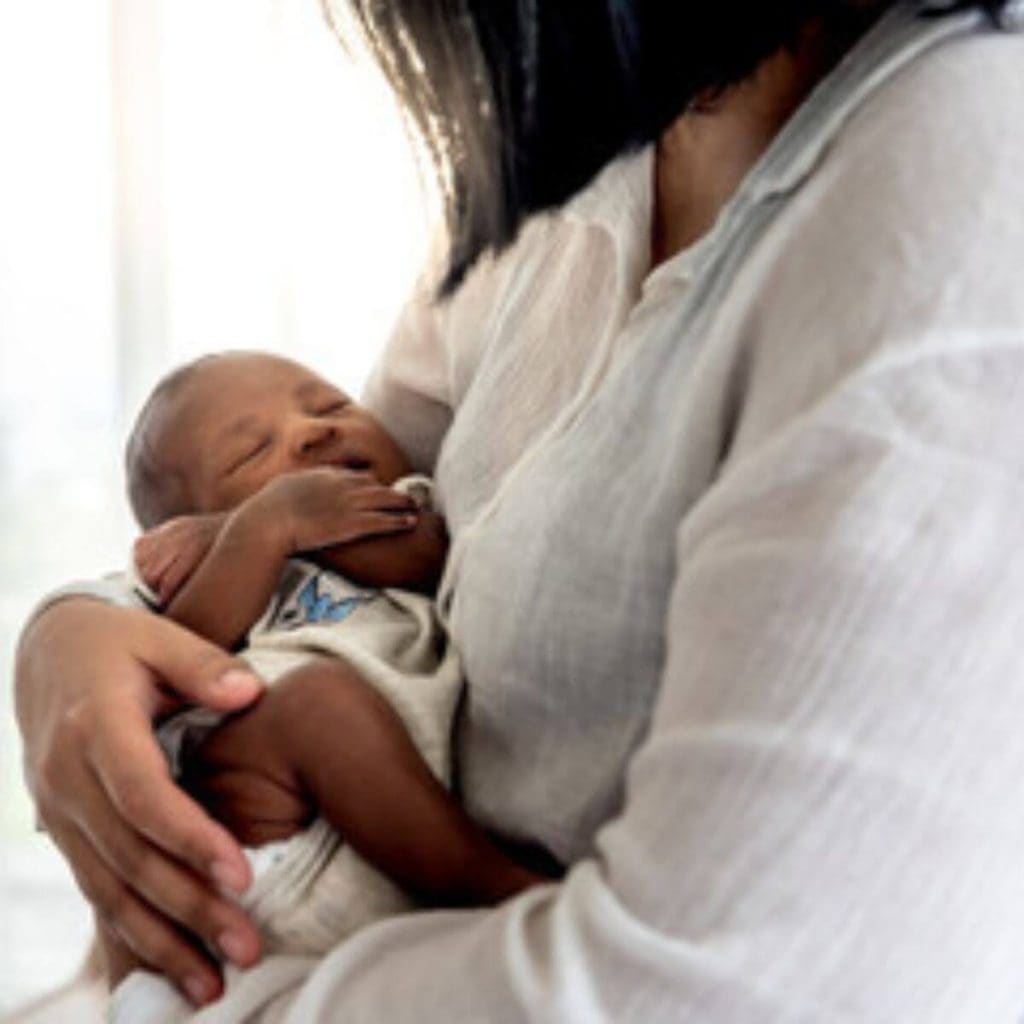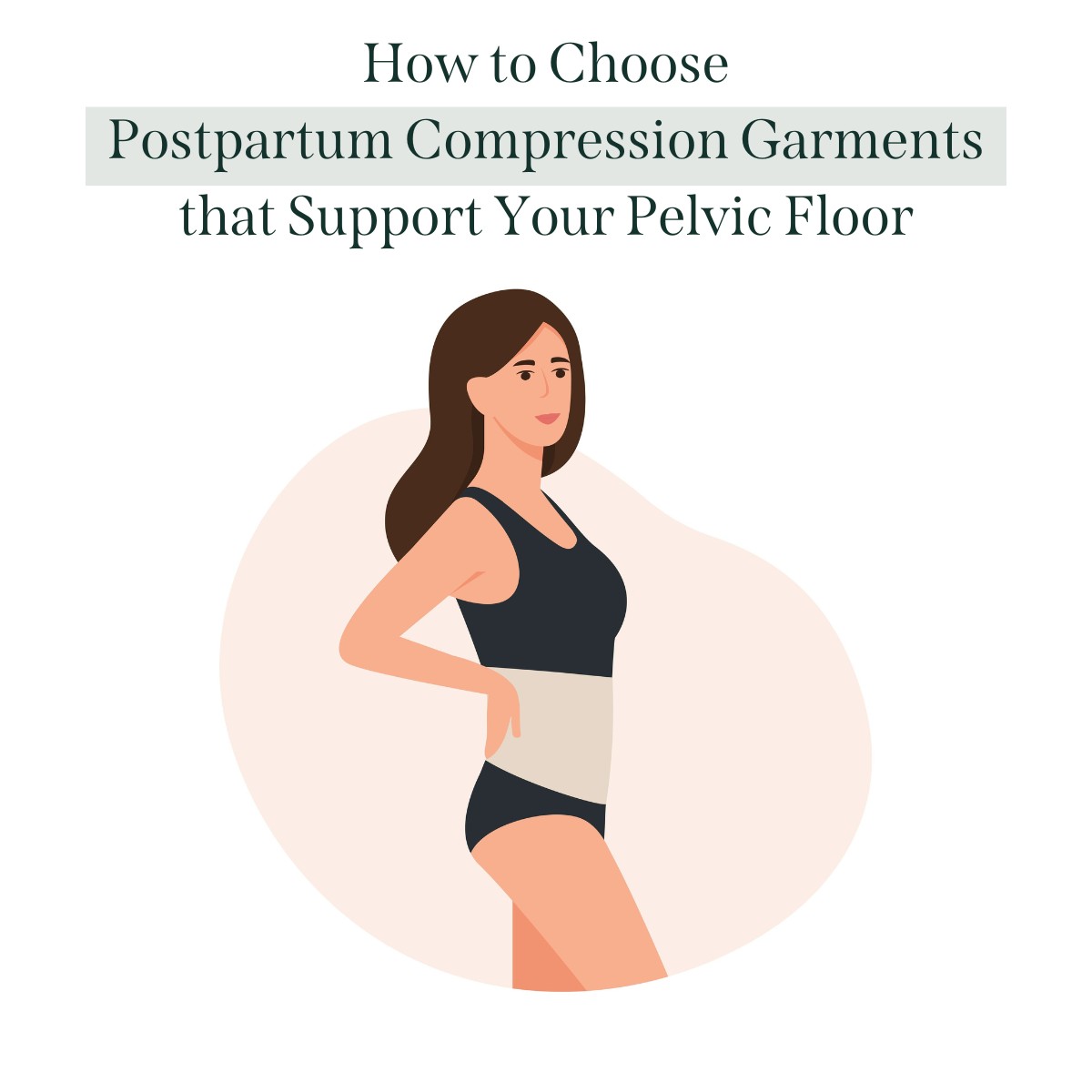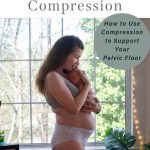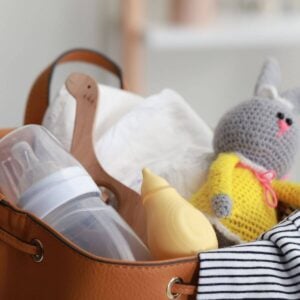Postpartum compression garments can be a great way to support your recovering body after birth by pushing your abdominal muscles back together, reducing swelling, and even increasing comfort. But many of the postpartum belly wraps people rave about actually do more harm than good. Why? They push your muscles downward, putting pressure on your pelvic floor muscles and increasing your risk of pelvic organ prolapse.
After pregnancy and birth, those muscles need relief, not added pressure! That’s why it’s essential we use compression garments that provide bottoms-up support. That way, you’ll support the healing of your separated abdominal muscles (called diastasis recti) while also keeping pressure off of your pelvic floor.
How do you know which postpartum support garments really work?
Look for garments like leggings and bloomers as opposed to corset-style garments. And keep reading because we have all the details and best recommendations!
Why Trust Us?
I’m Katy, a PhD and mom who had surgery to repair prolapse after my last pregnancy. I went on a mission to find the very best support for moms. I’ve interviewed pelvic floor physical therapists, postpartum-certified personal trainers, and used my research knowledge to take a deep dive into understanding postpartum compression to give you the best and most reliable support.

This site contains affiliate links, meaning that we earn a small commission for purchases made through our site. We only recommend products we personally use, love, or have thoroughly vetted.
- What is Postpartum Compression?
- Postpartum Compression Garments vs. Shapewear
- The Benefits of Compression After Pregnancy
- Should You Avoid Postpartum Belly Wrapping?
- Does All Postpartum Compression Increase the Risk of Prolapse?
- Our Top Picks for Safe and Effective Postpartum Leggings and Compression Wear
- Support Your Postpartum Body the Right Way!
What is Postpartum Compression?
Throughout pregnancy, our bodies produce a hormone called relaxin. Not only does this substance help during implantation, but it also allows our uterus to grow and expand, making room for our developing babies.
Relaxin is responsible for a lot of the stretchiness our bodies experience during labor. Ever notice how you’re a little more clumsy while pregnant? You have relaxin to thank. Muscles or joints overstretched? Relaxin again.
But don’t blame the hormone! We actually DO have need to thank it. As pregnancy edges towards the third trimester, relaxin contributes to the softening of the cervix for delivery. It also helps our hips open to support vaginally birthed babies through the birth canal. It’s important stuff.
But by the time our babies are born, the side effects of this hormone include overstretched muscles and swollen stomach skin after delivery.
So it’s no wonder women have historically turned to abdominal binding garments. Postpartum compression has historically been used to hold your core muscles tightly together so its easier for them to reconnect and heal.
Further to this, relaxin can also cause back and pelvic pain due to loose ligaments, so compression clothing also provides additional support to help carry us through the first few challenging weeks of life with a newborn.
When done properly, postpartum compression supports your lower back and pelvic floor, while also allowing for successful healing and helps our muscles return to their pre-pregnancy state. But when used improperly, it can do more harm than good.
Postpartum Compression Garments vs. Shapewear
While many compression products might resemble everyday shapewear, there’s a difference, and it’s important that you know it.
Shape wear simply smoothes out the lines of our bodies, but belly wrap items are specifically designed to provide our postpartum bodies with the extra support and comfort our weakened abdominal muscles and backs need after childbirth.
The problem is, while we think about trying to support our abdomens, we often ignore a key component to the healing of our bodies–our pelvic floor muscles. You know, that group of muscles that helps stabilize our core and helps us poop and pee properly. Those old things.
The ways we have historically used postpartum compression garments, while they might help pull our abdominal muscles back together, can actually work to weaken our pelvic floor muscles. Why? Because they push everything down, causing added stress to the pelvic floor and increasing the likelihood or severity of a frustrating condition called Pelvic Organ Prolapse (POP).
In this article, we learn how to support our recovering abdominal muscles while also supporting the ever-important pelvic floor.
The Benefits of Compression After Pregnancy
For centuries, abdominal binders have been a part of the postpartum culture in Asia, Europe, and Latin America. New moms have used various products, such as long pieces of fabric, to tighten their core and ensure proper stomach and back support after childbirth.
But why? Have our ancestors gone through the belly-binding process just for superficial reasons?
Not exactly.
Some of the most common reasons people consider this practice include:
1. Diastasis Recti (DR)
Do you know those six-pack abs people are always going on about? Well, pregnancy has a tendency to mess those up (for the few who had them to begin with)! Approximately 60% of us will experience a condition called diastasis recti during pregnancy.
Diastasis recti is a separation of abdominal muscles that occurs often during pregnancy. As your uterus expands, a band of tissue called the linea alba that rests between your muscles’ left and right sides will start to stretch.
This highly elastic tissue will often heal and return to its original location.
Other times, though, it becomes overstretched and can leave a gap between the abdominal muscles, which gives us a cute little tummy pooch long after our babies have entered the world.
You know the “mom pooch” people struggle to get rid of, and sometimes never do? It’s often caused by diastasis recti.
2. C-Section Recovery
After a c-section, incisions can cause intense pressure and pain during the healing process. Postpartum compression clothing is sometimes used to lessen discomfort during recovery.
Many types of abdominal binding products help reduce the amount of stress placed on the surgical area.
Note: C-section recovery is a delicate process; make sure to choose postpartum recovery products that offer gentle support and prevent too much pressure on the incision.
3. Back Support
Something we forget to tell new parents is how much of a pain in the ass back it can be to take care of your little one.
You’ll spend a significant part of each day leaning down to pick babies up, change their diapers, play with them, or help them do tummy time. While many of us wouldn’t trade these experiences for the world, there’s no denying the backache that can come from continually bending over.
Some people use postpartum wraps, belly binders, and compression items to support their midsection and lower back.
4. Reduced Swelling
Postpartum swelling is a very real thing and usually results from extra fluid intake due to IVs used during labor and delivery.
Postpartum compression stockings and leggings help increase blood flow and decrease swelling after childbirth. This is also why people at risk for blood clots wear compression stockings, so there’s a lot of evidence behind this one.
5. Pelvic Floor Health
Your abdominal muscles won’t be the only thing taking a hit during pregnancy, labor, and delivery.
Your pelvic floor will be stretched to the max, as well (pun intended!).
So how ironic is it that we often wear compression garments that hurt our pelvic floors? The good news, though, is that some do, indeed, help. We’ll tell you more.

Should You Avoid Postpartum Belly Wrapping?
This isn’t the popular answer, we know, but most pelvic floor physical therapists advise against using traditional postpartum belly wraps. You know, the kind that look like girdles?
Girdles, wraps, and corsets have a long history of use during postpartum recovery, but we’ve talked to a lot of experts, and most of them suggest steering clear.
Why?
Prolapse.
With these types of products, it’s easy to end up putting too much pressure on your healing stomach, which in turn can lead to more significant problems.
Symptoms of prolapse include:
- Pain
- Sexual Dysfunction
- Frequent Urination
- Difficulty Peeing
- A bulge at the vaginal opening
- Feelings of heaviness in the pelvis
- Feeling like a tampon is falling out when you aren’t wearing one
Does All Postpartum Compression Increase the Risk of Prolapse?
Don’t worry, friend. It’s not all bad news. While traditional belly bands, girdles, and corsets may not be the gentle support your body wants and needs, there are still things that do.
W recommend choosing supportive postpartum leggings, bloomers, and other products that aren’t as restricting after childbirth.
Not only are they not as restricting, but their design does something distinctly different from postpartum wraps and girdles. Leggings and bloomers lift, from the bottom up. And that’s the direction we need things to go to help avoid prolapse while also enjoying the benefits of compression.
Our Top Picks for Safe and Effective Postpartum Leggings and Compression Wear
Instead of focusing on girdles and corsets after birth, why not choose a comfortable product you won’t mind wearing for hours on end?
There’s no denying that our team is a big fan of any type of maternity leggings and postpartum leggings. That’s why we’re thrilled to let you know that some of our favorite brands, like Kindred Bravely and Bao Bei, make some of the best compression leggings on the market.
Not only that, but they’re are tons of other great products that offer gentle compression you’re guaranteed to love.
1. Bao Bei Support Bloomers
As you prepare to pack your hospital bag for mom, don’t forget to include these outstanding postpartum support bloomers from Bao Bei!
Much like other popular postpartum panties, these bloomers have a panel large enough to fit an oversized pad and a high waist that slides comfortably over your post-delivery belly. These are also one of our favorite choices when searching for excellent pelvic floor support.

They also help with various postpartum conditions, including
2. BaoBei Sculpt & Recovery Postpartum Support Leggings
You may notice we recommend BaoBei a lot in our pregnancy and postpartum articles, and there’s good reason for it. BaoBei was founded by a pelvic floor physical therapist and pilates instructor who wanted to support moms through active pregnancies and postpartum journeys.
The founder, Suzanne, actually saw patients doing what we warn against in this article–using belly binders for “support” and instead impeding their own postpartum recovery. And so, BaoBei was born. We wear it; we love it; we recommend it; and we have a discount! Use code undefiningmotherhood for 15% off.
.jpg)
These leggings provide the best postpartum compression we’ve found. We recommend sticking with your favorite maternity leggings for about 2 weeks after birth, and then switching to these when you need good compression and support.
3. Louisa Maternity and Postpartum Support Leggings
A gold winner in the Mom’s Choice Awards, the Louisa postpartum compression leggings by Kindred Bravely are among the most popular compression garments on the market.
Light compression is the keyword with these products. BaoBei has stronger compression than Kindred Bravely, so our top 2 legging choices work well together if you want moderate compression for everyday and strong compression for exercise, or days you spend on your feet.
While the Louisa leggings provide the necessary support for our backs, pelvis, stomach, and hips, they do it in a mild way that won’t put too much pressure on your healing body. This also makes them a great candidate for leggings to wear shortly after birth.
One of our favorite things about the Louisa leggings is that they also serve as great maternity leggings, too. They include a high-rise panel that offers optimal coverage of your growing belly. After delivery, you can fold down this panel to increase postpartum support.
Two birds, one stone!
Support Your Postpartum Body the Right Way!
The leggings and garments listed above are ideal solutions when you want the benefits of postpartum compression without the risks that can come with some belly binders and wraps that aren’t meant for postpartum bodies.
Some of those “other” products might focus on helping you get back into your pre-baby blue jeans, but we know the recovery process involves more than just trimming inches off your waistline.
Before you make any rash shopping decisions, consider the support you really need after baby. Take care of your body by purchasing the trustworthy compression items you deserve.
Have you used postpartum compression after birth? Tell us all about your favorite compression garments!








